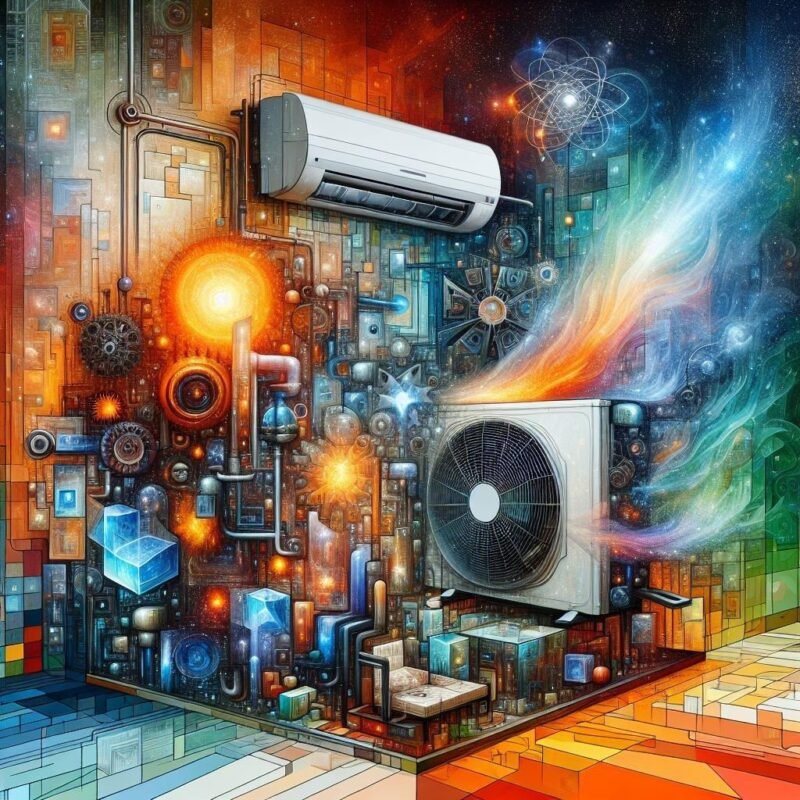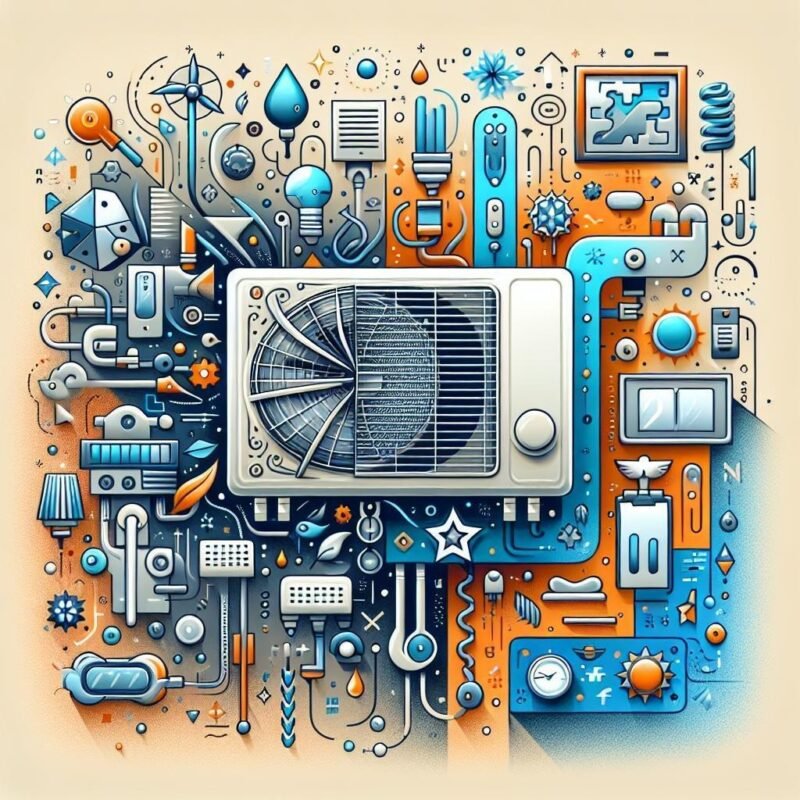What is the process for troubleshooting a mini split AC system?

Picture this: it’s a scorching summer day, and suddenly your trusty mini split AC starts acting up, leaving you in a pool of sweat and frustration. We’ve all been there, desperately googling solutions while fanning ourselves with whatever’s within reach. But fear not! Whether your mini split is blowing warm air, making strange noises, or simply refusing to cooperate, there’s a systematic approach to diagnosing and fixing these modern cooling marvels. In this guide, we’ll walk you through the step-by-step process of troubleshooting your mini split AC system, turning you from a confused homeowner into a confident problem-solver.
Identifying Common Mini Split Warning Signs and What They Really mean
Your mini split system communicates through various signals, much like a secret language waiting to be decoded. When the LED display flashes red, it’s frequently enough pointing to a compressor issue, while a steady yellow light typically indicates a faulty sensor. Pay close attention to unusual sounds - a clicking noise during operation might suggest a failing relay switch, whereas persistent buzzing could mean loose components or debris in the fan.
Understanding these indicators helps you take swift action before minor issues escalate into major repairs. here are the most frequent warning signals you’ll encounter:
- E1 or F1 Error: temperature sensor malfunction
- Blinking timer light: Dialog error between units
- Blue LED Flashing: Defrost cycle activation
- Orange Light Steady: Low refrigerant levels
| warning Sign | Urgency Level | Common Solution |
|---|---|---|
| Water Dripping Inside | Moderate | Clear drain line |
| strange Odors | High | Clean filters |
| No Power Display | High | Check circuit breaker |
Quick Steps to Check Your Mini Split Components Before Calling a Pro
Before reaching out to professionals, you can perform a few essential DIY inspections to potentially identify common issues with your ductless system. Start by visually examining the outdoor condenser unit for any debris, leaves, or dirt accumulation that could obstruct proper airflow. Listen carefully for unusual noises and check if both the indoor and outdoor fans are spinning smoothly. Also, ensure your remote control has fresh batteries and verify that all display indicators are functioning correctly.
Take a moment to inspect these crucial components:
- Air filters (clean or replace if dirty)
- Condensate drain line (check for clogs)
- Indoor blower wheel (look for dust buildup)
- outdoor coil fins (straighten if bent)
- Refrigerant line insulation (verify integrity)
| Component | Common Issue | DIY Check |
|---|---|---|
| Air Filter | Clogged | Visual inspection |
| Drain Line | Blocked | Water flow test |
| Coil | Dirty | Surface check |
Essential Tools and Safety Measures for DIY Mini Split Diagnosis
Before diving into the diagnostic process, ensure you have a reliable multimeter for voltage testing, a set of manifold gauges for pressure readings, and an infrared thermometer to check temperature variations.Safety should always be your top priority, so don’t forget personal protective equipment like insulated gloves and safety glasses. A quality refrigerant leak detector will prove invaluable when hunting down those sneaky system leaks, while a digital psychrometer helps evaluate the system’s performance by measuring humidity and temperature differentials.
Keep these essential tools organized in a dedicated toolbox, along with these crucial items:
- Wire strippers and crimping tools
- Fin straightening comb
- Digital camera for documenting connections
- Service manual specific to your unit
- EPA-compliant recovery machine
- clean microfiber cloths
| Safety Level | required Protection |
|---|---|
| Basic | Gloves, safety glasses |
| Intermediate | Face shield, voltage tester |
| Advanced | Full PPE, recovery equipment |
From Error Codes to solutions: Your Complete Mini split Recovery Guide
Understanding those cryptic error codes flashing on your mini split display doesn’t have to feel like solving a puzzle. Common error codes like E1,F4,or P5 often point to specific issues that you can address with the right know-how. Start by documenting the error code and checking your unit’s manual for initial guidance. If you’re seeing temperature fluctuations or hearing unusual noises, these could be valuable clues pointing toward the root cause.
Take a systematic approach to pinpoint the issue:
- Check the remote control and thermostat settings
- Inspect air filters and coils for debris
- Listen for unusual compressor sounds
- Verify proper refrigerant levels
- Examine electrical connections
| Error Code | common Cause | Quick Fix |
|---|---|---|
| E1 | communication Error | Reset Power |
| F4 | Temperature Sensor | Clean Sensor |
| P5 | Voltage Issue | Check Wiring |
Q&A
Q&A: Troubleshooting Your Mini Split AC System Like a Pro
Q: What should I do if my mini split AC isn’t cooling properly?
A: Ah, the summer heat and a reluctant AC—never a good combo! First off, check the thermostat settings.Is it set to cooling? If yes, look at the filters and clean them if they’re dusty. A dirty filter can restrict airflow and reduce cooling. Also,ensure nothing is blocking the indoor unit. If all else fails, it might be time to call in a professional—nobody wants a hothead!
Q: My mini split is making strange noises. What could be the problem?
A: Noise, noise, noise! If your system sounds like it’s auditioning for a Looney Tunes cartoon, it’s worth investigating. Rattling may indicate loose parts, while a humming sound could mean the compressor is doing its thing—or struggling a little too much. Check for any loose components, and if the racket persists, don’t hesitate to let a technician check it out. Your mini split deserves a tune-up,too!
Q: Why is there water pooling around my indoor unit?
A: Oh no,we’ve got a mini rainforest happening! water around the indoor unit could mean a clogged drain line. This might be a DIY fix if you’re comfortable, but a professional can ensure it’s done right and check for othre potential issues like refrigerant leaks. Either way, we want to keep that water away from your floors!
Q: How can I tell if my mini split system needs refrigerant?
A: If your air isn’t as cold as a polar bear’s party and the unit seems to be running longer than usual, it might be time for a refrigerant check! Also, look for any ice forming on the coils or any hissing sounds that could signal a leak. Remember, refrigerant is like the fuel for your AC—it needs to be just right for optimal performance!
Q: What’s the easiest way to keep my mini split running smoothly?
A: Easy peasy: regular maintenance! clean those filters every month, check the outdoor unit for debris, and schedule annual professional tune-ups. Think of it as a spa day for your AC—just like us, it feels better and operates more efficiently when pampered!
Q: Is it normal for my mini split to run all day?
A: It’s not just you—it’s a common concern! Some efficiency is expected, especially on hot days. However, if it’s running constantly without enough cooling, check for insulation issues (is that a draft I feel?), or ensure the size of the unit is appropriate for your space. Sometimes, your mini split may just need a bit of TLC to work its magic!
Ready to tackle those cooling troubles? With these tips up your sleeve, you’re well on your way to becoming a mini split whisperer. Happy troubleshooting!
In Summary
As we wrap up our journey through the world of mini split AC systems, we hope you’re feeling empowered and ready to tackle any cooling conundrum that might come your way! By understanding the process of troubleshooting these compact powerhouses, you can ensure they serve you well, keeping your home comfortable when it matters most. Remember, like any relationship, a little care and attention goes a long way!
If you find yourself at a crossroads, don’t hesitate to call in the pros; sometimes a little extra help is all you need. As you adjust those settings and listen for the hum of a job well done, may your mini split bring you the blissful coolness of a summer breeze. Stay cool, stay curious, and happy troubleshooting!






















